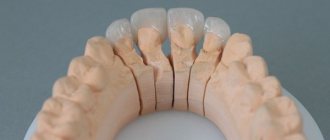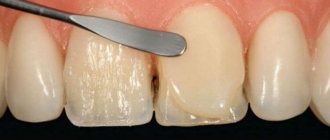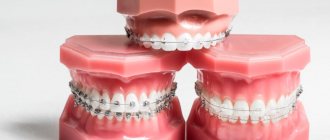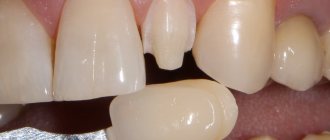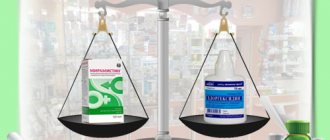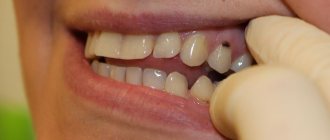Any person at any age can face the problem of violation of the aesthetics of the dentition. These can be either congenital defects (wide interdental spaces, abnormalities in the structure and growth of teeth) or acquired defects (changes in the color of pulpless teeth, chips and destruction, fluorosis).
These imperfections can be corrected using dental structures such as lumineers or veneers, which are successfully used in many clinics in our country. The LeaderStom network of dental clinics also offers the opportunity to install veneers of this type.
When patients are faced with the need to correct defects in the dentition and want to correct them using veneer structures, they inevitably face the question: how do veneers differ from lumineers, and which teeth overlays are better to choose?
In order not to make mistakes and ultimately obtain the desired result when using lumineers or veneers, the patient should get an idea of each of the listed structures separately. Understanding the features and characteristics of dental onlays is not so difficult if you understand what they are made of, in what cases they are used, and how the luminization and veneering procedure occurs.
Veneers and Lumineers – what are they?
Veneers are thin orthopedic overlays that are fixed to the outside of the enamel on the front teeth. They cannot be removed by yourself, since they are set on special dental cement. They are made from ceramics, ceramic composite, porcelain or zirconium dioxide. Such plates allow you to hide visible imperfections in a row, slight curvature, interdental spaces, chips and cracks, pigmented areas and yellowness. They do not cause discomfort and require the same care as your teeth.
Veneers are installed in two ways – direct and indirect. The latter involves the fixation of plates, while the direct method is, in fact, the restoration of a damaged tooth with composite materials, which is carried out in one visit. The plates are created based on an individual impression and require at least two visits to the dentist.
The photo shows the teeth before and after fixing the plates
Lumineers are similar plates, only even thinner. This development was patented by the American company Cerinate - only there they create original lumineers from durable translucent ceramics up to 0.2-0.3 mm in thickness. With the help of such products you can create a real Hollywood smile.
The photo shows lumineers
On a note! Recently, an alternative to Cerinate products has appeared on the market - DUO-PCH lumineers (created by the same company). They do not require a long wait for readiness, since they have a template shape, but are created from the same material.
Today, another alternative has appeared - ultraneers. In essence, these are improved veneers that are the result of the work of Russian specialists. They are created from high quality German pressed ceramics E.Max.
Indications for the use of veneers
- Special ceramic onlays such as veneers will help in the following cases [2]:
- change in enamel color (yellowing, tarnishing) that cannot be corrected by bleaching (for example, fluorosis, pigmented spots);
- chips, irregular crown shape;
- not satisfied with the shape and position of the teeth;
- there are small fillings on the front surface that you want to hide, especially if they have darkened and are located in the smile area;
- damage of varying severity (cracks, chips).
What are the pros and cons of such prosthetics?
This method of restoration of minor dental defects has a whole list of undeniable advantages. Let us list the main advantages of microprostheses:
- the ability to hide defects quickly and with a guaranteed result,
- materials that are as resistant to pigmentation as possible are used to create the plates,
- Lumineers provide additional enamel protection,
- their installation is completely painless (anesthesia is used during turning),
- stunning aesthetic effect,
- long-term operation up to 10-20 years.
This method is used to eliminate interdental spaces
“I just got veneers on my front teeth six months ago. To be honest, I regret a little that I chose a more budget-friendly option and had to grind down the enamel. On the other hand, I would be able to achieve a similar effect only after several years with braces and chemical whitening, and this takes a long time and costs money.”
DmitriyS, Moscow, from a review on the website of one of the dental clinics
However, there are also disadvantages here, among which, first of all, it is worth highlighting the rather high fragility of the products. In addition, the price of such a smile is far from small, so the method is not available to all patients. In the case of veneers, you have to significantly grind down your living teeth, and this is irreversible. In addition, it is important to find a truly experienced specialist, since inaccuracies in the positioning of the pads can cause caries and gum inflammation.
Veneer installation process
The procedure for installing veneers occurs in several stages.
- At the first appointment, the doctor assesses the current condition of the teeth. If treatment is necessary, it must be carried out. If everything is in order, then an impression of the teeth is made, according to which future veneers will be made and their color will be determined. At the same appointment, the dentist grinds down the top layer of teeth on which veneers are installed and secures temporary dentures. Depending on what veneer material is chosen, they are produced in 5 to 14 days.
- At the second visit, the veneers are directly installed. A composite material is applied to the prepared dentition, and plates are attached to it. Excess cement is removed and final sanding is performed if necessary.
Work examples
How often do you visit the dentist?
In what cases is fixation of overlays indicated?
Microprosthetics allows you to solve a whole range of aesthetic problems at once. Here are the main indications for its implementation:
- yellowness of the enamel, pigmented areas,
- darkening of teeth and the inability to lighten them using in-office whitening,
- fluorosis or tetracycline teeth as a result of long-term use of tetracycline antibiotics, which causes the enamel to become yellow,
- presence of minor chips and cracks,
- crowding or slight curvature,
- small crown height,
- Tremas and diastemas are interdental spaces.
With the help of microprostheses you can get rid of yellow teeth.
We are talking only about minor defects and the desire to get a dazzling smile. However, in more complex cases their installation will not be possible. In case of severe curvature or destruction, you will have to resort to orthodontic methods or full prosthetics.
Why do veneers darken?
The main reasons for the darkening of veneers include:
- non-compliance with the dentist’s recommendations (frequent smoking, consumption of drinks and foods that contain large amounts of coloring substances);
- insufficient oral care. Neglecting regular brushing of teeth can lead to the formation of plaque on the surface of the veneers, which in the future contributes to their darkening;
- damage to the adhesive fixing base. The resulting voids are filled with food particles. This provokes the accumulation of deposits that change the color of tooth enamel. The transillumination of such areas through the veneer creates a visual sensation of darkening of the microprosthesis itself.
Excessive cleaning of veneers is also not recommended. When using toothbrushes of increased rigidity and toothpastes with coarse abrasive particles, microdamage may occur on the surface of the veneers, creating a favorable environment for the accumulation of deposits when consuming coloring substances contained in drinks and food.
Are there any contraindications
Orthopedic onlays are not fixed in the presence of untreated carious cavities and other dental diseases - first you will have to deal with all the associated problems. Veneers that require grinding are undesirable for patients with thinned enamel. Those who suffer from bruxism - involuntary clenching of the jaws during sleep - will also have to refrain from this method.
The photo shows the consequences of bruxism
Disadvantages of veneers made from outdated materials
Previously, feldspathic veneers had a significant drawback - thickness, and the grinding of teeth was more significant than now: up to 2 mm of enamel was removed. Modern materials make it possible to remove 0.3–0.5 mm, even with grinding of teeth, maximum 1 mm. Why is this better? If you sharpen your teeth too much, then all the enamel is actually sanded off, the dentin is exposed, and the porcelain adheres to it less well. Such veneers easily fly off the tooth. The smaller the turning, the better the fixation. Now the grinding is carried out in such a way as to preserve healthy enamel, and the veneers hold up very well.
The main differences between veneers and lumineers
All types of onlays described by you are fixed in order to hide visual imperfections in the dentition and make it even and snow-white. But there are a number of specific differences between veneers and lumineers. Let's find out what the difference is between these two types of microprostheses:
- The key difference is the thickness of the onlays - for veneers it is approximately 0.7 mm, while lumineers are only 0.2 mm thick1. When installing the latter, you can refuse to prepare living dental tissues; only minimal processing is possible,
The photo shows veneers (left) and lumineers (right) - veneers are attached to dental cement, while lumineers are fixed using a special glue that is resistant to humid environments and other external factors,
- In terms of the quality of fixation, veneers are inferior to their more expensive counterparts. Food particles can get clogged under them, which leads to the development of carious processes,
- The estimated service life of veneers is 10 years, but with lumineers you can enjoy a beautiful snow-white smile for up to 20 years, of course, with proper care,
- the shade is selected individually in each case, but veneers usually look more natural,
- Lumineers are much more expensive.
American lumineers from Cerinate Corporation
Another significant difference is the waiting time for finished products. So, veneers are created in Russia, so you won’t have to wait long. But original Cerinate lumineers require a longer wait, since they are manufactured in laboratories in the USA. As an option, you can choose the Russian analogue DUO-PCH.
Main disadvantages and contraindications for installation
Veneers and lumineers have a number of disadvantages. They should be taken into account when choosing a particular restoration method. Veneers have a fragile design. Cracks and breaks may appear on it that cannot be repaired. Therefore, the entire record will have to be replaced and made again.
On large teeth the structure looks massive, so grinding will be required. If a veneer falls off, this is a consequence of poor quality work by the dentist or an individual reaction of the body.
Lumineers are only made in the USA, so there will be a wait for them to be made and shipped. In some cases, the waiting period is a month. This type of lining is highly expensive. Long service life is possible only with careful handling. Therefore, you should not eat solid foods: nuts, seeds, etc. Installing lumineers requires special knowledge from the dentist. If the structure puts pressure on soft tissues, problems with the gums will appear.
We recommend paying attention to ultraneers - this is an analogue of lumineers developed by Russian dentists. They are just as thin, but appeared quite recently.
It is not always possible to install dental veneers. They should not be used for bruxism. In a dream, a person clenches his jaws with force, and this will damage the plates. The habit of gnawing something is also a contraindication for wearing veneers, as it creates extra stress.
The dentist must evaluate the condition of the teeth. If they are weakened or there are a large number of fillings on them, then the overlays cannot be glued, as they will increase the destruction. Active caries is also a contraindication, since under the plates it will continue to destroy the tooth. Installing veneers or lumineers in this case will complicate the treatment.
Vita scale for shade selection
Doctors do not recommend installing onlays in case of malocclusion. The jaws will collide with each other and increase pressure, which will lead to damage to the structure. The natural fragility of enamel is also a contraindication.
Estimated cost - which method will cost more
Lumineers are a more expensive option for prosthetics, although today Russian manufacturers offer their own, more budget-friendly analogue of ultra-thin plates. Approximate prices for installation of products of different brands and from different materials are shown in the table below.
| Types of microprostheses | Approximate cost for 1 pad |
| Ceramic E.Max | 30 thousand rubles. |
| On a zirconium dioxide frame | 25 thousand rubles. |
| From ceramic composite | 20 thousand rubles. |
| Lumineer DUO | 45 thousand rubles. |
| Lumineer Cerinate | 65 thousand rubles. |
Price for lumineers in Moscow
When using original products from the American company DenMat, the price for 1 tooth ranges from 30 to 60 thousand rubles. This company produces two versions of microprostheses:
- Lumineers® CERINATE;
- Lumineers® DUO.
Lumineers® CERINATE micro dentures are custom-made lumineers that are made from impressions of the patient's teeth. Their cost is on average 50,000 rubles per unit. This amount includes the cost of manufacturing and installation of microprostheses. The cost of delivery of lumineers is about 40 thousand rubles.
Note! Currently, Lumineers® CERINATE microprostheses are manufactured not only in DenMat’s own laboratory in the United States of America, but also in two other laboratories. These institutions are located in Luxembourg and Italy. No other dental laboratory in the world is authorized to manufacture thin onlays under the Lumineers® brand.
Lumineers® DUO products are not individually manufactured lumineers, but sets of ready-made microprostheses. They come in different colors and sizes. Therefore, it will not be difficult for an experienced dentist to choose a headset that ideally matches the shade of the patient’s teeth.
But it is worth remembering that the Lumineers® DUO microprostheses must be diligently “brought to mind” by a specialist. Since they will not perfectly fit the patient’s teeth in shape, you will have to grind the microprostheses with a drill for quite a long time after they are fixed.
Lumineers® DUO Lumineers are essentially a hybrid of a composite filling material and Cerinate porcelain.
In fact, they are no better than composite veneers, the cost of which is approximately 8-9 thousand rubles.
The only advantage of such microprostheses over thin veneers is the ability to fix lumineers directly on the day of visiting the dental clinic.
What is better to choose
To understand which is better – veneers or lumineers, you need to decide which characteristics are your priority. So, the first ones look more natural, so they are suitable for patients whose professional activities have nothing to do with public speaking or working on television.
In addition, the patient’s financial situation plays an important role in this matter – lumineers are quite expensive. At the same time, they are more reliable and durable, so if such an opportunity exists, it is worth giving preference to high-quality fastening and a long service life.
Lumineers
Note: The decision about what is better to install, lumineers or veneers, should be made after analyzing the state of the oral health and taking into account the financial capabilities of the patient.
Lumineers are significantly more expensive, but have a number of serious advantages:
- there is no need for mandatory tooth preparation;
- installation is quick and does not require a large number of visits to a specialist;
- the procedure is practically painless;
- there is no need to pre-set temporary options;
- no danger of allergies;
- resistance to color changes.
The main disadvantage will be the high price of lumineers. There is another negative point associated with the inevitable thickening of the tooth, since it is not ground down.
Difference in service life
In terms of operation, veneers are considered less reliable, since food debris often gets into them and bacteria accumulate. All this leads to the rapid development of caries and gum inflammation. Important importance is given to the material from which such plates are created - products made from zirconium dioxide will be the most durable. In addition, veneers are attached to cement, which breaks down over time and separates from the enamel. Ultra-thin pads are mounted on a special glue that is resistant to most external factors.
Veneers - a proven solution over the years
The main advantage of veneers is that it is a proven technology that has been used in aesthetic dentistry for many years. They are small ceramic plates. The average thickness of a veneer is 0.6 mm and may vary slightly in one direction or another. The choice of veneer thickness depends on the client’s age, gender and degree of dental damage. You should know that it is impossible to install a veneer on severely damaged tooth enamel. In such cases, it is recommended to choose a full crown.
There is no need to be afraid that the record will look artificial. Veneers are made to order and matched to the natural tone of the teeth. Of course, they will be lighter to ensure your smile shines the way you want it to. But they will be in your natural color range. In addition, veneers are translucent. The light will not be reflected from them, but from the surface of the tooth. Therefore, veneers do not look like something stuck on top, but look very natural, through them you can even see the original texture.
They have veneers and disadvantages . They still “eat up” the free volume in the mouth a little. Therefore, before installing them, the natural tooth is ground down to the thickness of the veneer. This leads to damage to the enamel, thinning of the tooth itself, and other damage. Of course, with high-quality installation of the plate, everything will work out. Veneer will literally replace natural enamel. But if the fastening is not done very carefully, then after 5-10 years the tooth may begin to decay, and then a ceramic implant will have to be placed in its place.
Features of care
After fixing the onlays, no specific procedures are required - teeth should be brushed as usual, twice a day. It is recommended to purchase an irrigator - this is a small portable device that supplies a mixture of water and air under high pressure. This compact device allows you to thoroughly clean hard-to-reach places. It is also important to rinse your mouth regularly after each meal, and it is best to limit your intake of coloring foods and drinks.
For good use an irrigator
Solid foods should be eaten with extreme caution so as not to inadvertently damage the plates. With care, a beautiful snow-white smile will remain with you for many years.
- Bragin, E.A. Basics of microprosthetics. Pin designs of dentures, inlays, veneers, artificial crowns, decorative dental onlays, 2009.
How to care for veneers
The prosthetic protocol does not provide for specific procedures, but routine cleaning and rinsing must be performed at least twice a day. Many doctors advise buying a portable irrigator - a device that delivers an air-droplet mixture under pressure, thanks to which the smallest particles and fibers of food products are removed. In addition, it is recommended to exclude or minimize the presence of foods and drinks containing aggressive dyes in the diet, as well as completely stop smoking.
Where to choose
It is impossible to give a definite answer to the question “what to choose – veneers or lumineers.” The choice is made based on the patient’s preferences, financial capabilities and, of course, indications. For example, Lumineers are very thin and use a translucent adhesive, so if they are installed on dark enamel, the aesthetics will not be as attractive.
In addition, lumineers often do not look entirely natural, that is, they are whiter than classic ceramics - this may not suit some patients who dream of a snow-white, but still natural smile. All these factors must be taken into account and be sure to look at the work before and after a particular doctor in order to make a final choice.
